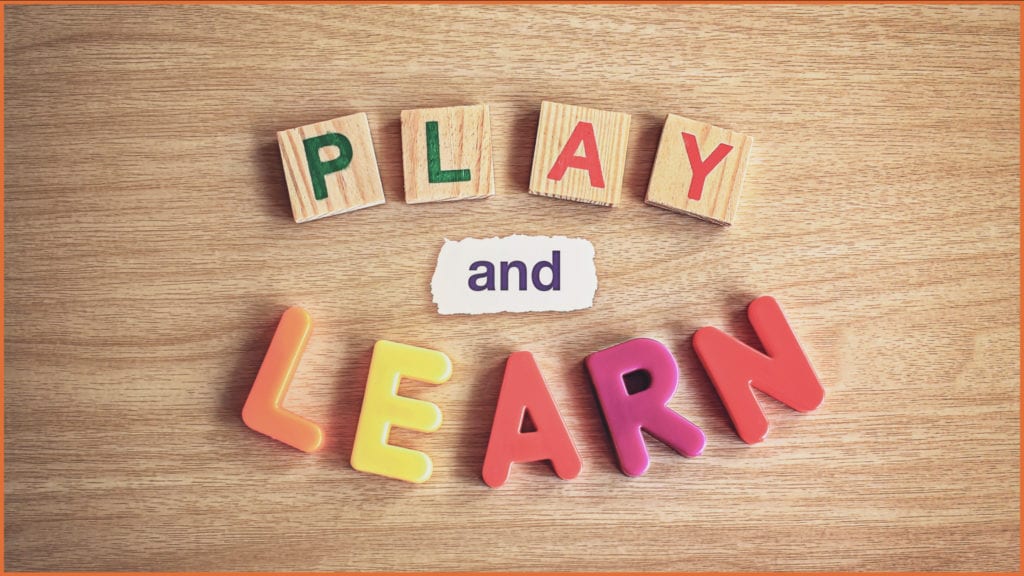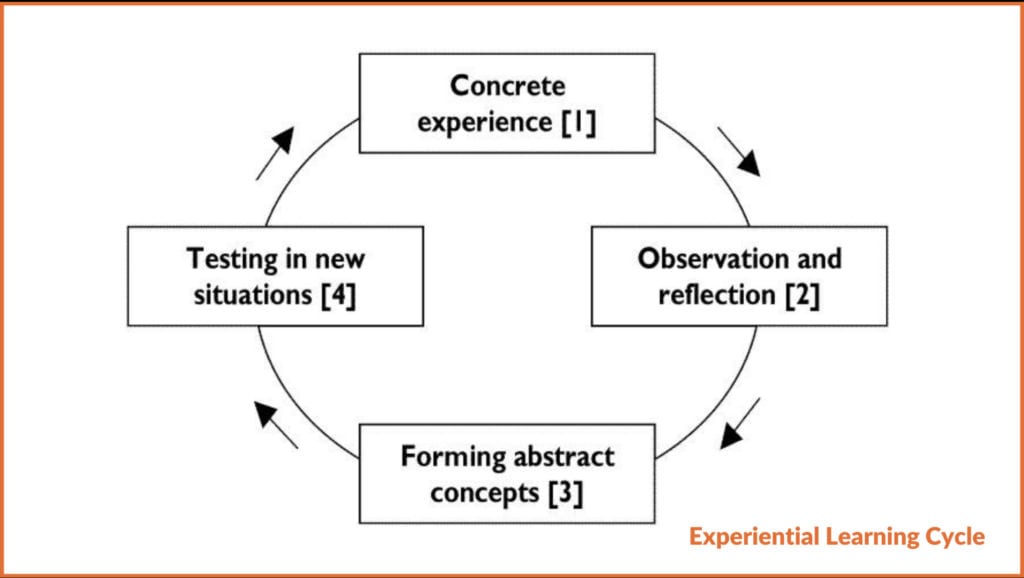
Increasingly used by organisations and training professionals across the world, experiential learning is here to stay. It allows for impactful training while being engaging for the learner. With a wide range application, experiential learning has found its way across sectors including team building, along with enabling learning and development.
What does ‘experiential learning’ mean?
The term is derived from the famous Experiential learning Cycle developed by Kolb and Fry. It also draws on the early work done by Dewey, Levin, and Piaget. And, with each passing day, more and more successful teams across industries are merging the powerful concept of ‘play’ with this unconventional learning theory to optimise their team development interventions.
David A. Kolb (with Roger Fry) created the experiential learning model with the following four elements

1. Concrete Experience
It is said that “you have got to climb the mountain to know the mountain.” Even with the ability to simulate experiences in our mind that we are yet to receive, hands on experience remain crucial for impactful learning. Just like with riding a bicycle, a “hands-on” experiences will always make a long lasting impression on the learner.
2. Observation & Reflection
Having once tasted the experiences, your team can actively share their individual experience with each other. Reflection is part of the thinking process; it will allow the team to discover new perspectives and ideas which can further enhance learning.
3. Forming Abstract Concepts
Armed with the lessons learnt from reflection, your team can then form generic concepts and principles to improve their own individual learning. This can result in an overall growth of your entire team.
4. Testing in New Situations
So far, so good. However, simply forming concepts and principles without practical application would be useless. Brilliant ideas are dime a dozen. It’s only execution that makes them come alive. Application of the concepts and principles to new situations is imperative to the overall development of the team.
What is play and what place does it have in the above theory?

Simply put, play can be defined as any activity which can be enjoyed by the individual without stress or barriers. In its simplest form, play takes the form of children playing with each other. This involves uninhibited expressions of joy and other happy emotions.
However, somewhere down the journey of changing into adults, we leave behind our sense of play and enjoyment (at least most of us do.) And so, learning becomes mundane. Inundated with boring classroom style sessions, starting from school and carrying on to corporate work like – there are but minor differences in the medium of delivery.
You may still ask – but, does it make sense to involve ’play’ with corporate learning?

Insights from the various succes stories across organisations says yes, indeed. Consider this scenario – an organisation uses an innovative way to conduct regular team meetings; Team members wear a disposable coat which can be written on with markers. Everyone writes the ideas discussed and actionable items on each others’ back (on the coats), instead of noting it down.
Instead of the conventional minutes of the meeting, the team members have fun while still retaining important information. A similar concept could be taken one step further and applied to team building workshops. Experiential learning could make team building fun and enjoyable for the participants. Using play makes the team members drop their work facades and become more of their normal selves. The positive energy generated by the release of tension itself can lead to a great learning session.
However, a word of caution here; If the team loses track of the ultimate objective of the exercise, it could degenerate into a mindless activity with no positive outcome.
So, how does a facilitator couple experiential learning with the ’power of play?’
Here are a few thoughts on the same –
1. Put yourself in their shoes
While designing a learning program or team development workshop, ask yourself –
“ If I was a participant in this workshop, would I have fun?”
And then, go ahead and curate an experience that allows for the answer to be an astounding ‘Absolutely!’
2. Engaging participants
Is your session engaging the participants? Are they actively participating in the conversation? Do they look curious? Are they asking questions?Are they interested in answering your questions?
If it involves only one way flow of information to participants, the outcomes will not be optimum or sustainable.
3. Speak as little as possible
Sounds counter intuitive? Try it out!
The most powerful facilitators are people who can get other people to talk while reining in their own urge to impart wisdom during the session. If the learning has to be imbibed into the work place, the participants need to own the learning. This means that they need to feel that the ideas originated with them.
4. Encourage positive behaviour
Pointing out positive behavior of individuals in such sessions can ensure that lone voices in a session do not go unheard. From a few generous words of praise, a round of applause from everyone, or even small giveaways to the individuals can go a long way. Such interactions encourage further engagement on their part. And, furthermore, it gives you a chance to build up impactful conversations.
5. Reflection
While it is extremely important for the participants to have fun during the session, the facilitator needs to be mindful of guiding the sessions toward an impactful debrief session. Setting aside time for team discussion after activities is a good way to achieve this.
However, ‘debrief,’ as it is popularly called, should not turn out to be a monologue from the facilitator. Instead, it is important to employ your facilitation skills to encourage participants to discuss their learning and experiences.,
